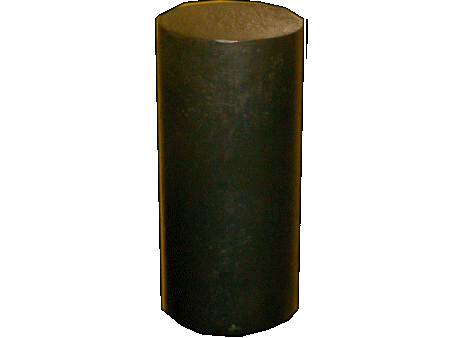
|
Production of car parts
Whoever has had the opportunity to visit a car factory in the last few years, is more and more surprised to discover how few people are actually occupied with the production process. In the past, at least, e.g., in the
press works, people were necessary to move the metal parts from one giant press to the other, these jobs have almost completely disapeared. People are only necessary nowadays, when the machines have to be
made- ready, however, the make-ready times have been drastically reduced.
Another point where intensive manual skill and labour was found, was in the 'marriage', the merging of engine and coachwork, thus, one is amazed to see that also here the helping hands are obviously no longer
needed. Only when it comes to the final assembly does it become human, and a little frantic. The quality control is also unimaginable without the efforts of humans.
This however, is not our subject here. We want to deal with the finishing of parts which are delivered 'ready to go' to the production lines, or to be more accurate, parts of them. Thus a differential for a front-wheel drive
appears at the actual car manufacturer already mounted in the big engine block. The two drive shafts are also already installed.
The secret of most cars, is that distinctly more than 50 percent of the car is not made by the manufacturer at all, but by the component suppliers. Of course there is worldwide competition. It would certainly be
interesting, in the case of some luxury cars, to find out which components are produced by which supplier. What we would like to do here, is deal with the production of small components.
On this page you can find out a bit more about the very flexible casting technology and the vast precision available without having to do any finishing work. Of
course, this is also valid
for forged parts. We are interested, first of all, in the machining-planing process. At first sight, such machines have not changed very much. A clamped-in work-
piece is still rotated past a
cutting tool or the milling tool passes over the surface of an absolutely rigid part.
Naturally the machine is a Numeric Controlled type, which means that it is fed with computer data. There are also any number of them, which are automatically supplied with new parts to be
processed and be disposed of. The quality control is now of paramount importance and in addition, one avoids large amounts of waste because the machine measures each manufactured part and carries out the
necessary corrections straight away.
The same as at the manufacturers, the assembly at the supplier also very often occurs automatically. Here the quality control also comes into play, where, e.g., through suitable mechanical measures, a wrong part or
one with the wrong measurements could disrupt the entire construction. Computer controlled cameras, photo-electric beams or automatic measuring systems are of course, also possible.
It is difficult enough for the suppliers, not only because the end user, who is the vehicle owner, can trip-up over their product, they also have the car manufacturer at their throats, with whom a long-term contract would
possibly be threatened if there are too many complaints. As already mentioned, an enormous amount of cost-pressureis applied. This demands new manufacturing methods, which save time, money and in the most
favourable case, also investments.

Let's take the animated part above. In two seconds plus a one second pause, a wheel in the axle-drive is formed from highly condensed (forged) material. In this case, the part still needs finishing before it can be
installed, however, the conversion per time-unit is enormous.
The finished work-piece comes out of this part of the die. This is expressed by the term 'calibration'. If however, this was a conventional flow-process, huge forces would be necessary. With the wobble calibration, the
upper die is moved around at a small angle of up to 2 degrees, so that, in the practice, a flow, with the following compression takes place. This occurs in a cold state and needs no finishing.
By the way, the reduction in costs and the speeding up of the production process, does not mean that the investments are reduced. On the contrary, in this case, the exact opposite is more appropriate. Therefore of
course, there is a suitable production machine for the wobble-calibration and used machines are quite rare because this is still a relatively new process. 11/10
|
|